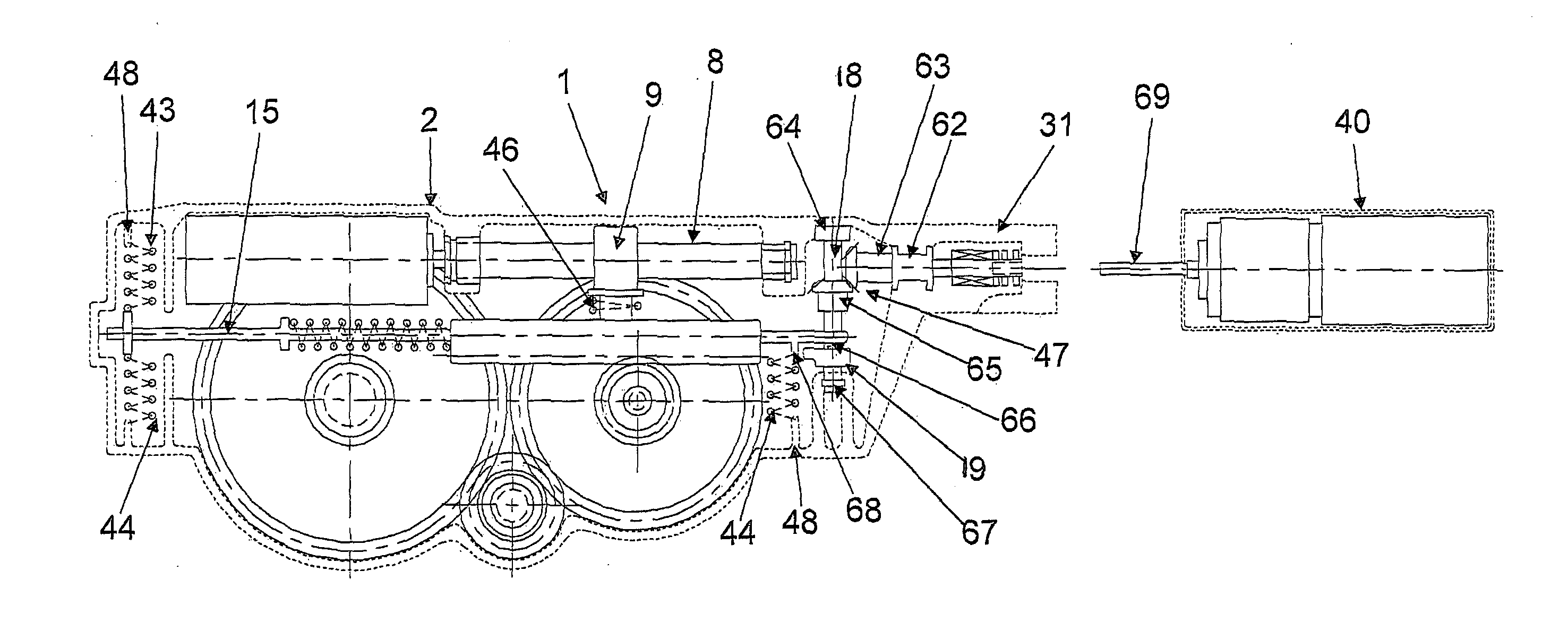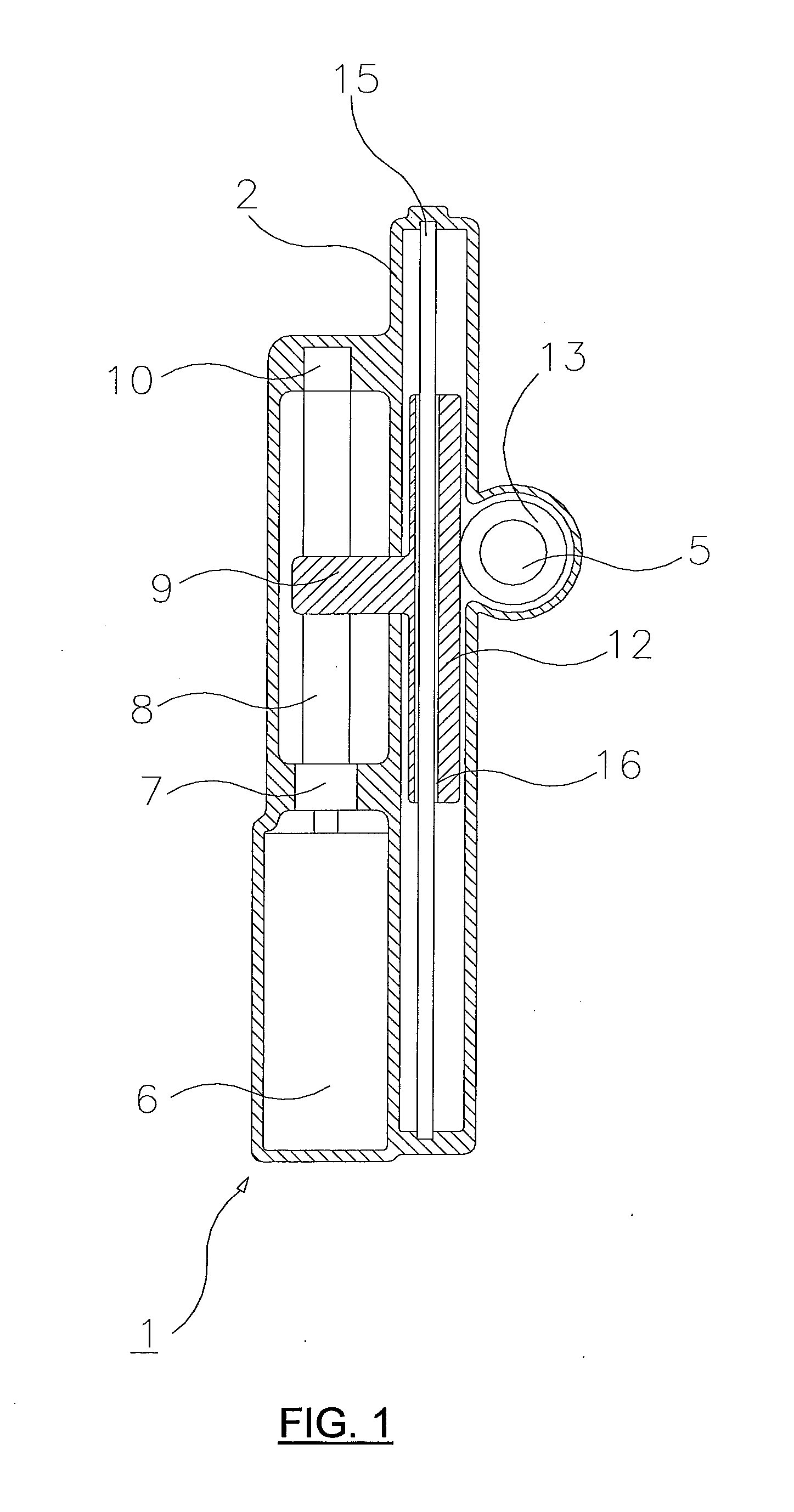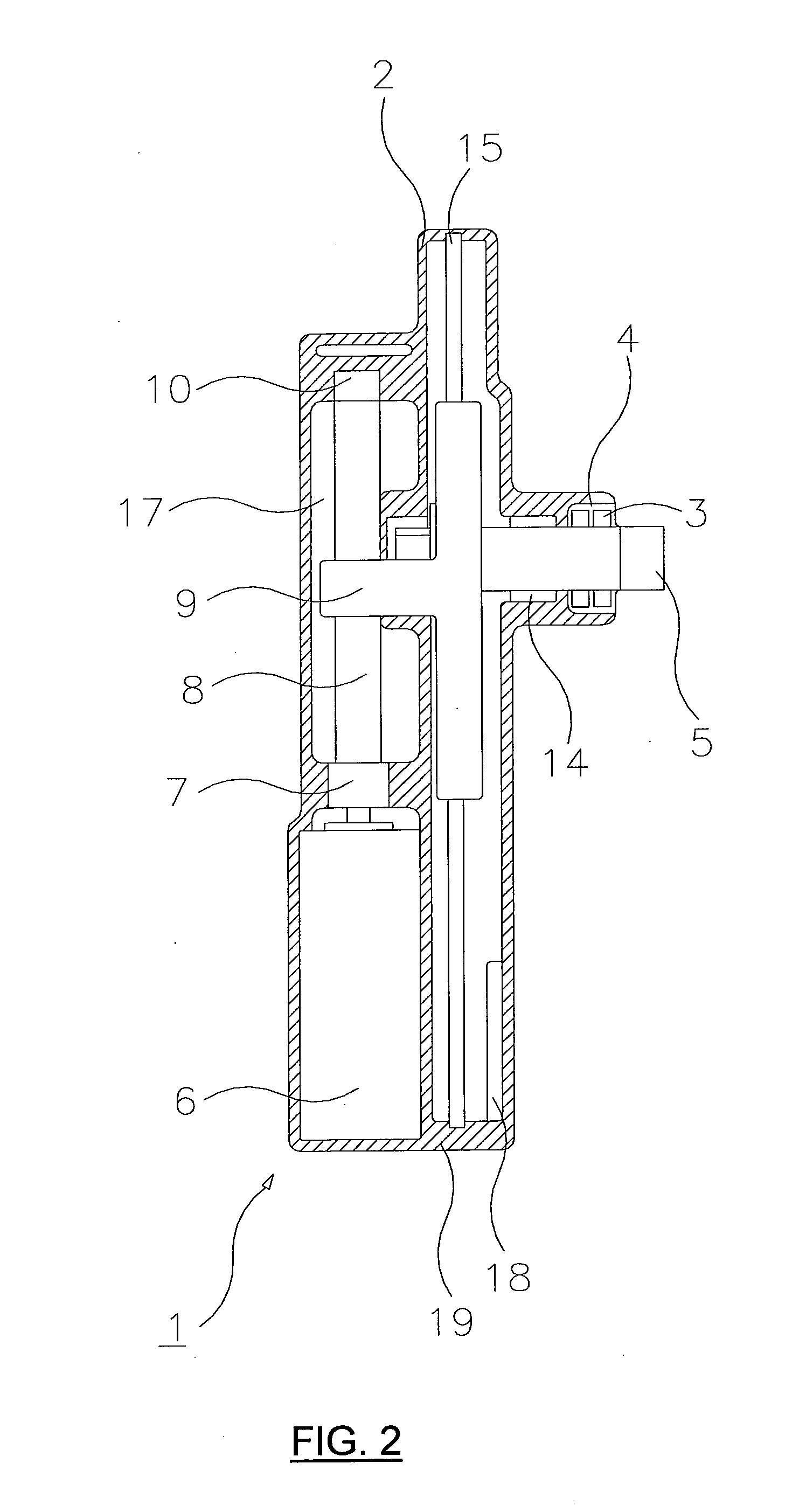Gearbox
a gearbox and gearbox technology, applied in the field of gearboxes, can solve the problems of inflexible operation of worm-driven gearboxes, large gearboxes including worm-driven gearboxes for providing drive to the drive train, and large size of gearboxes
- Summary
- Abstract
- Description
- Claims
- Application Information
AI Technical Summary
Benefits of technology
Problems solved by technology
Method used
Image
Examples
first embodiment
[0096]FIG. 3 shows a collective where two gearboxes 1 according to the invention are coupled to each other. In this case the gearboxes 1 are coupled by the shaft 5 and / or other output means to form a collective output means 20. Each gearbox can work independently, although typically the gearboxes work together. The gearboxes can share the same housing 2 or can have separate housings 2. The gearboxes 1 can work harmoniously together even if the respective internals of the gearboxes 1, such as the drive train, actuator element, and / or outputs means as well as motion and force outputs and inputs are different, even if the gearboxes 1 are not the same. This is of an advantage that cannot be equalled by other known gearboxes.
[0097]Each gearbox 1 can have a different output means not only in terms of force and motion but also with regards to the size and shape. The gearboxes 1 can be attached to each other in axial alignment with relation to the output means 5 as shown in FIG. 3, or may b...
second embodiment
[0103]FIGS. 5A and 5B shows a gearbox 100. FIG. 5A shows a plan view and FIG. 5B shows a side view.
[0104]The gearbox 100 is similar to the gearbox shown in and described with respect to FIGS. 1 and 2. Therefore the numbering used is the same as for FIGS. 1 and 2 for the same components, and the description, alternative features and functions of the basic gearbox as described with respect to FIGS. 1 and 2 are not repeated.
[0105]The main difference between the gearbox 100 and that shown in FIGS. 1 and 2 is that of a drive train, such as additional gears, coupling the driven shaft 5 to a separate output shaft 105. In the example shown, the gear 13 is provided on shaft 5 which includes the first gear of the drive train, drive gear 22. The drive gear 22 meshes with an intermediate gear 23 provided on shaft 25, which in turn meshes with an output gear 24 provided on an output shaft 105 and in this case concluding the drive train. The output shaft 105 may extend through an end cap 104 simi...
PUM
 Login to View More
Login to View More Abstract
Description
Claims
Application Information
 Login to View More
Login to View More - R&D
- Intellectual Property
- Life Sciences
- Materials
- Tech Scout
- Unparalleled Data Quality
- Higher Quality Content
- 60% Fewer Hallucinations
Browse by: Latest US Patents, China's latest patents, Technical Efficacy Thesaurus, Application Domain, Technology Topic, Popular Technical Reports.
© 2025 PatSnap. All rights reserved.Legal|Privacy policy|Modern Slavery Act Transparency Statement|Sitemap|About US| Contact US: help@patsnap.com



